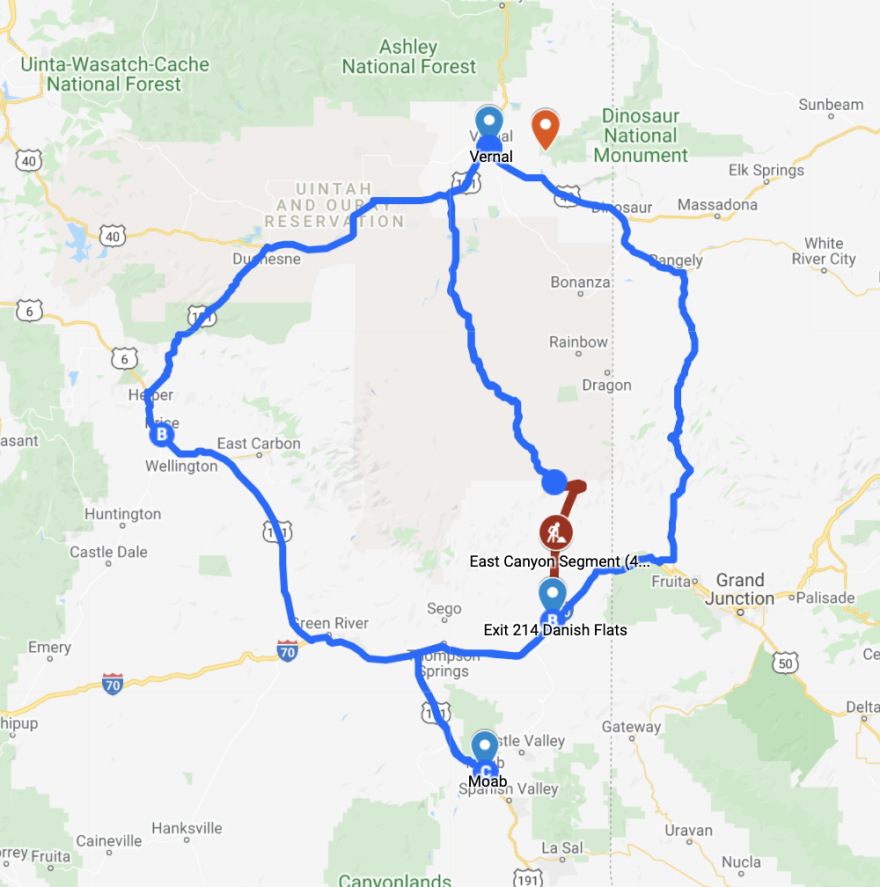A coalition of rural counties is trying to convince the state to build a highway through the Book Cliffs in northern Grand County to promote tourism. But critics say the highway offers marginal benefits, is a waste of taxpayer money and could endanger wildlife, like elk and bison, who call the lush mountains and canyons home.
When the highway was first proposed in the late 1980s, it was meant to aid extractive industries. It’s currently called the Eastern Utah Regional Connection, and proponents say it is needed to connect tourist destinations in northeast Utah, like Flaming Gorge National Recreation Area and Dinosaur National Monument, with the Mighty Five national parks in the south.
“What a tremendous recreational opportunity that will be to our state and our entire region, to be able to connect the dots like that,” said Mike McKee, director of the Seven County Infrastructure Coalition.
Grand County joined the coalition in 2014 but dropped out a year later, due to public outrage over the group’s support for the Book Cliffs highway. And county residents still oppose the highway, according to a letter the county council voted to send to the Bureau of Land Management last week.
“In every instance, our citizens have consistently made clear that they oppose the construction of a highway through the Book Cliffs in Grand County,” the letter said. “Yet, time and time again, we are forced to restate our long standing opposition as the SCIC continues to burn thru (sic) taxpayer dollars to force this unwanted infrastructure development within Grand County’s jurisdictional boundary.”
The Bureau of Land Management is currently reviewing a right-of-way application from the Coalition, which received $3.2 million from the state legislature in 2018 to conduct an environmental impact study for the road, according to McKee.
Gov. Gary Herbert wrote a letter to McKee in January, expressing his support for the project. And the coalition stated the road will be developed and maintained, “in conjunction with the State of Utah”, in its right-of-way application, submitted in February.
McKee pointed to an economic impact study conducted in 2015, which found the road would reduce the travel time between Vernal and Moab by 30 to 40 minutes and bring in additional $80 million dollars in tourism revenue—and $129 million in energy revenue—by 2040.
But critics say the benefits of the highway don’t outweigh its costs, which could be anywhere from $195 to $418 million, according to a recent estimate by the coalition. Trisha Hedin, an adjunct professor at Utah State University Moab, who is also on the Board of the Backcountry Hunters and Anglers, said the road would pose a significant threat to wildlife.
And Moab resident Sarah Stock estimates the drive from Vernal to Moab would only be around 24 minutes shorter using the Book Cliffs highway compared to the existing route through Rangely, Colorado.
Stock said the drive from Dinosaur National Monument to Moab would actually be three miles longer using the new highway versus the one in Colorado. She works for Living Rivers, a conservation group that opposes energy development in the Uintah Basin.

Grand County Councilmember Jaylyn Hawks cited Stock’s estimates, saying the road poses basically no benefit to tourists traveling to Moab.
“This is a case where I firmly believe that, if you build it they will not come,” she said. “Because they’ve already got two other roads to get them there.”



